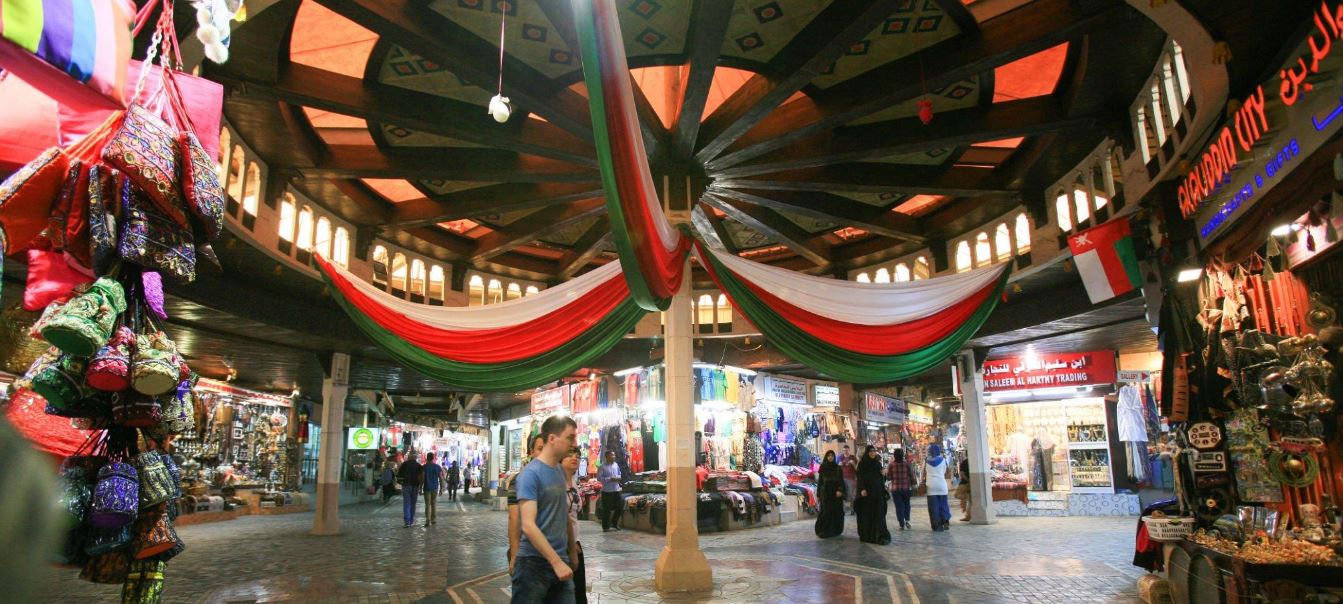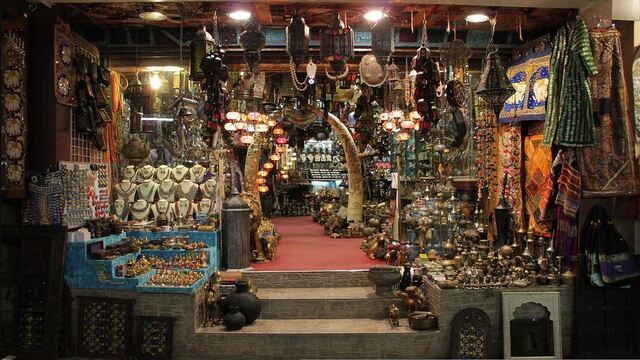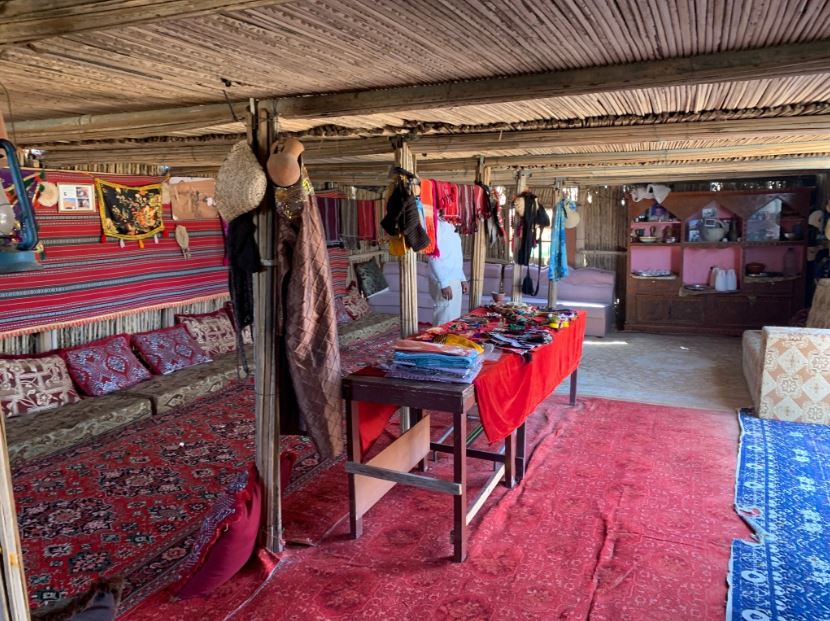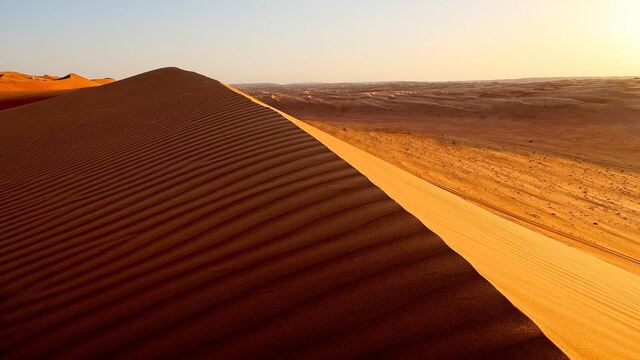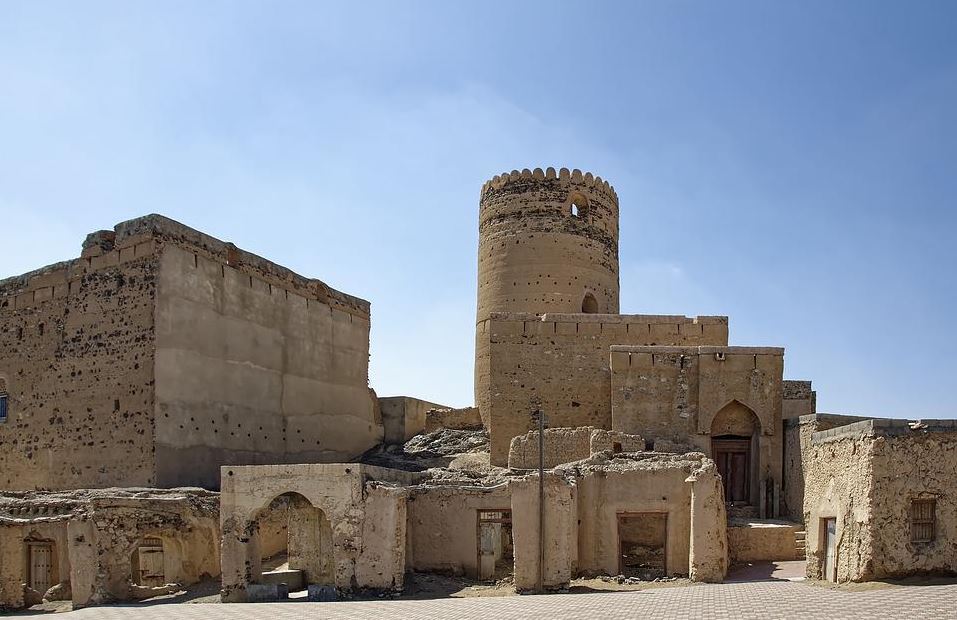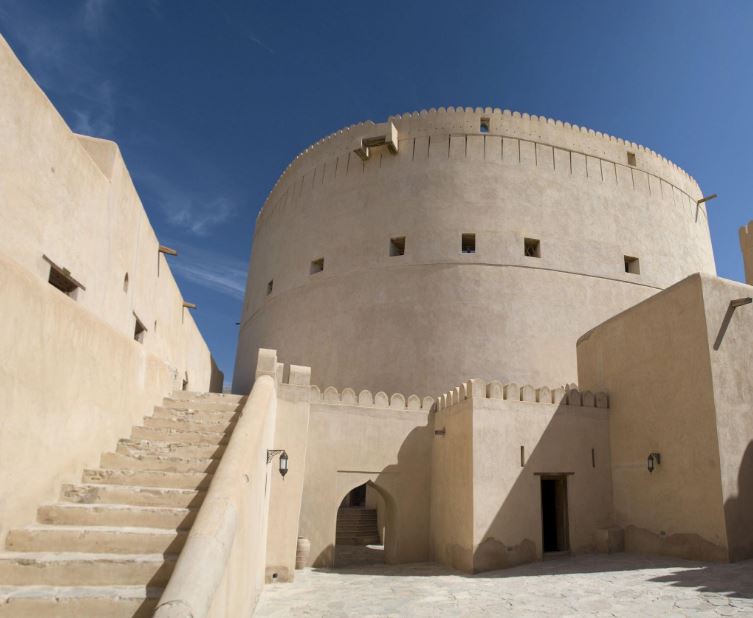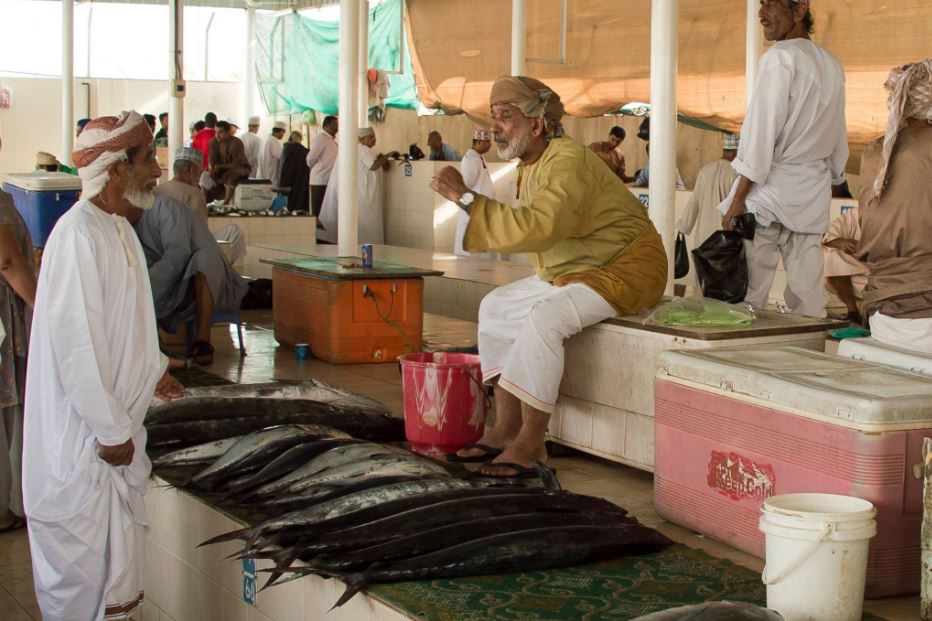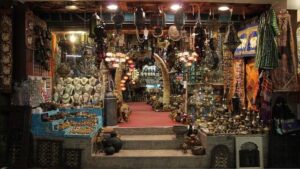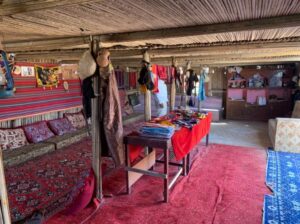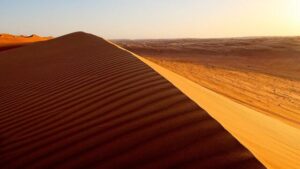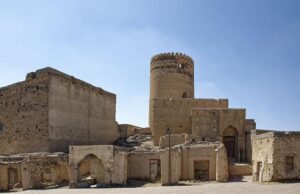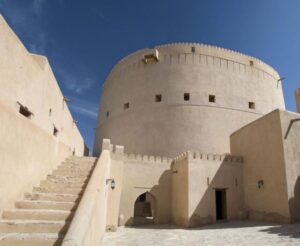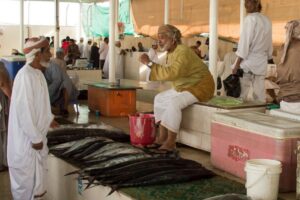Classical Oman
6 days/5 nights $949 P.P
Price to be reconfirmed
Muscat-Nakhal-Wakan Village-Nizwa-Jabreen-Bahla-Desert-Sinaw-Wadi Bani Khalid-Mudhairib-Muscat
Day 1 Muscat
Arrive in Muscat proceed to the hotel and check in.
You will visit Grand Mosque, Fish Market, Al Alam Palace, Al Mirani Al Jalali Fort, Mutrah Souk, Bait Al Zubair, Muttra Corniche (Photo stop) and Muttra Fort (Photo Stop).
Grand Mosque: – Also named Sultan Qaboos Grand Mosque, it is Oman’s most prominent mosque, with 20,000 worshippers at a time. The mosque is a wonderment of contemporary architecture, and this worship center is beautifully crafted with Islamic, Omani, and Middle-eastern architectural designs
Note: – Timings: For non-Muslims, the mosque is open from Saturday to Thursday between 8 am to 11 am. Muslims can visit any time. Women should cover their head with the lady scarf, Must wear long sleeve Shirt/Top/T-Shirt and should cover their leg till the ankle. Men should wear full pants and half sleeve shirt or t-shirt also permitted. Both should not wear transparent clothing and no pictures of living beings.
Fish Market: – Located in the heart of Muttrah in Oman’s largest port, the new fish market is a tribute to Oman’s past and future. The town of Muttrah is known for its long trading history, unique port and long-standing fishing tradition. Located near the city’s original fish market, which was built in 1960, the new market represents the continuation of the region’s trading and fishing traditions, while also meeting Oman’s need to cater to its growing tourism industry.
Al Alam Palace :- This royal palace carries 200 yrs history and allows visitors to take photographs from outside. Also called The Sultan Qaboos Palace, the residence is one of the best representations of vibrant Islamic architecture. Now, the property is used to accommodate distinguished officials. Constructed by Imam Sultan Bin Ahmed, the palace is surrounded by The Mutrah harbor and lush greenery.
Drive to Wadi Dayqah Dam 26 Km, 55 Minutes.
Al Mirani Al Jalali Fort :- This 16th-century fort, along with the AI Jalali Fort, was erected by the Portuguese to guard the Muscat port. Visitors are not allowed to enter the palace, but they can enjoy the mesmerizing view from outside. The form played a significant role in the defeat of the Portuguese. The architectural wonder has various tools on display used in an ancient war.
Mutrah Souk :- Located in the heart of Muttra in Oman’s largest port, the new fish market is a tribute to Oman’s past and future. The town of Muttra is known for its long trading history, unique port and long-standing fishing tradition. Located near the city’s original fish market, which was built in 1960, the new market represents the continuation of the region’s trading and fishing traditions, while also meeting Oman’s need to cater to its growing tourism industry.
Bait Al Zubair :- Situated in Muscat City, this private museum houses historical items belonging to Oman’s cultural, military, and social past. Opened in 1998, this architectural complex has an extensive collection of artifacts like jewelry, weapon, household goods, Khanjars, and costumes Of Omani culture.
Opera House (Photo Stop) :- People who have a particular interest in art, music, and culture should keep it on their wishlist while traveling to Muscat. Set up in the year 2001, the magnificent complex has an auditorium, theatre, art center, and landscape garden. With a capacity of 1100 people, the art center is a true example of carrying the heritage with the arrangements of diversified cultural events.
Muttra Corniche (Photo stop) :- Mutrah stretches along an attractive corniche of latticed buildings and mosques; it looks spectacular at sunset when the light casts shadows across the serrated crescent of mountains, while pavements, lights and fountains invite an evening stroll or a bike ride.
Muttra Fort (Photo Stop) :- Muttrah stretches along an attractive corniche of half-timbered houses and mosques. At sunset, it looks spectacular as the light casts shadows on the mountain’s jagged crescent and the walkways, lights and fountains invite evening walks and bike rides.
Overnight in Muscat.
Day 2
Drive from Muscat to Nakhal
Drive to Seeb Fish Market 32 Km, 30 Minutes
You will visit Seeb Fish Market, Nakhal Fort, Ayn Thowarah and Wakan Village.
Seeb Fish Market :- The new fish market is a tribute to Oman’s past and future. The town of Seeb is known for its long trading history, unique port and long-standing fishing tradition. Located near the city’s original fish market, which was built in 1960, the new market represents the continuation of the region’s trading and fishing traditions, while also meeting Oman’s need to cater to its growing tourism industry.
Drive to Nakhal Fort 65 Km, 50 Minutes
Nakhal Fort:- It was initially constructed in the pre-Islamic periods. Various defenses and guns surround the fort’s peak, and the fortifications are formidable. In the background, you may even make out the craggy Al Hajar Mountains. It’s rewarding to stroll in a roundabout the exterior of the castle prior you explore the interior to get a more profound examination of the ramparts. These are awesome, and they somewhat take you back to the medieval era.
Drive to Ayn Thowarah 3 Km, 8 Minutes
Ayn Thowarah:- This is a hot spring that is located beside Nakhal Fort naturally. In Nakhal, you must explore Al Thawarah Hot Spring, one of Oman’s most fabulous thrilling tourist destinations. The Nakhal Fort isn’t too far from the swimming hole, and an artificial swimming pool and a river in which the spring flows are pleasant for a walk. It would be best if you went during the weekdays because the weekend is usually very crowded.
Drive to Wakan Village 48 Km, 1 Hrs.
Wakan Village:- The village is located at 2,000 meters above sea level in Wadi Mastar, Wileit Nakhal, South Al-Batinah Governorate. This village is 150 kilometers from Muscat. The road leading to the village passes through a series of valleys that can only be reached by four-wheel drive vehicle. The region has warm summers and cold winters. Visitors observe many agricultural terraces with fruit trees, including grapes, pomegranates, apricots, and some legumes.
Drive back to Muscat 134 Km, 1 Hrs. 35 Minutes
Overnight in Muscat.
Day 3
After the breakfast tour begins.
Drive from Muscat to Nizwa 170 Km, 2 hrs.
You will visit Birkat Al Mouz-Nizwa Souq-Nizwa Fort-Jebreen Castle-Bahla Fort-Nizwa
Nizwa Fort :- The erection of Nizwa fort, which was started in the seventeenth century by Sultan Bin Saif Al Yarubi, the utmost important member of the Yarubi tribe, and finished in twelve years, has a long and illustrious history. However, this Fort was constructed by Imam Al Sultan bin Malik Al Kharusi during the ninth century.
Drive to Nakhal Fort 65 Km, 50 Minutes
Nizwa Tower:- The foundation extends 30 meters (98 feet) underground. One of the most interesting features is the drum-like cylindrical tower about 45 meters (148 feet) in diameter and about 34 meters (112 feet) high. Two cannons guard the tower’s entrance, as well as a labyrinth of rooms, high-ceilinged halls, doorways, terraces, narrow staircases and corridors that give you a deeper look at the ingenuity of Omani architecture.
Nizwa Souq (Market):- which is close to the Nizwa fort, will offer you a taste of the past of Oman because most of its buildings still feature the country’s historical buildings. Based on what you wish to purchase, the souq is divided into separate sections; You can witness locals purchasing Omani Pottery, Silver jewelry, Handicrafts, Spices, Frankincense, Traditional Omani attire for both men and women, Traditional Khanjars (Dagger), Perfumes, Dates and Dates Honey, Meat, fruits and vegetables, Omani Traditional Sweet Halwa. The remaining of its souq offers distinctive mementos like fresh dates, lamps, and taqiya headgear. The typical Omani souq marketplace is the most incredible location to observe how the community market functions.
Drive to Jabreen Castle 42 Km, 30 Minutes
Jabreen Castle:- Jabreen Castle rises majestically from the neighboring plain without opposition. Even though there is an abundance of defenses, Jabreen is among the most charming and well-preserved fortresses out there. Hence it’s worth the struggle to scale another series of battlements. You’ve to head towards the flagpole for a bird’s-eye glimpse of the courtyard with honeycomb windows at the keep’s center. The spaces here have unique colored ceilings. In contrast to other castles and forts in Oman, Jabreen Castle was constructed in 1675 by Imam Bil-Arab Bin Sultan and served as a significant hub of education for Islamic law, medicine, and astrology. Within the extensive battlements, there’s a great deal to understand about the castle’s history.
Drive to Bahla Fort 9 Km, 15 Minutes
Bahla Fort:- Bahla Fort, among the biggest in Oman, now towers over the expansive contemporary community of Bahla following years of repair. It was constructed by the Bani Nabhan clan, which ruled the region from the twelfth to the fifteenth century, and was designated a Unesco World Heritage Site in 1987. Although this massive fort has a couple of interpretive panels, its expansive vista from the castle walls and size are its main draws. A beautiful illustration of a medieval Islamic society built over the Falaj is the neighborhood’s mud-brick homes (irrigation channels). The winding roads here are best explored on foot.
Drive to Falaj Daris & Birkat Al Mouz 53 Km, 40 Minutes
Falaj Daris:- The Falaj Daris is perhaps Oman’s biggest Falaj and a World Heritage Site in Nizwa, giving the city the water it needs for its farmlands and crops. Locals frequently visit the park created on a little fraction of the Falaj! This old Falaj is thought to date back to 2500 BC! Hence, While you’re on vacation in Nizwa, the Falaj is an excellent location to unwind and relax!
Birkat Al Mouz:- In Oman’s Nizwa province, in the Ad Dakhiliyah district, is the historic hamlet of Birkat Al Mouz. It also houses the reconstructed fort known as Bait al Redidah and functions as the gateway to the Wadi Al-Muaydin on Jebel Akhdar’s southern edge. We highly suggest you make a pit break at the Birkat Al Mouz remains on your approach to Jebel Akhdar since the scenery from this village will transport you to a different era. You would also learn about the way that these native inhabitants resided in these mountains, which were bordered by plantations
Overnight in Nizwa
Day 4
After the breakfast tours begins.
Drive to Sinaw 110 Km, 1 hr. 20 Minutes.
You will visit Sinaw Souq and Ruins-Desert Bedouin House-Dunes Drive-Sunset
Sinaw Souq and Ruins:-Sinaw is considered one of the most important markets in the eastern region of Oman, along with the Sur market and Ibra market. The city has a rural character because it is surrounded by the desert. The Sinaw Thursday Market is held every Thursday in North Al-Sharqiyah province. It is a very busy market due to its proximity to the Bedouin community who go there to buy basic necessities and sell livestock and handicrafts. This market is open from 6am to 1pm.
Drive to desert 132 Km, 1 hr. 50 Minutes.
Desert Bedouin House:-It is the home of Bedouins so you are going to visit The House Bedouins, where you will enjoy the traditional coffee, the locals call it Kahwa. Specially locals like to drink this traditional coffee with the dates.
Desert Dunes:- The people visiting it for the first time would be genuinely impressed by the beauty with which the dunes and their colors change. You can also ask your driver to take you to the great desert dunes in the region, popularly known as Al Wahiba Desert, where you will be treated to the thrill of driving through the undulating dunes of the desert. Once you are finished with the dune driving then you can enjoy the Sunset from the most beautiful desert of Oman.
Overnight in Camp.
Day 5
After the breakfast drive to Muscat.
Drive to Wadi Bani Khalid 56 Km, 1hr.
You will visit Wadi Bani Khalid-Mudhairib Villag
Wadi Bani Khalid:- Proceed to the most famous and beautiful Wadi Bani Khalid to enjoy the pleasing and beautiful Wadis of Oman. While traveling there, you will go across many small villages, towns, and even through the mountains that would treat you to some excellent scenic and panoramic beauty of the landscape present there. These roads will eventually lead you to a large pool covered with vegetation. You can park your vehicle here and continue your journey towards the deep end of the wadis. Additionally, you can dive in for a quick swim in these waters to feel the glorious beauty of nature. However, wearing comfortable clothing and shoes during this trip is recommended.
Drive to Mudhairib Village 68 Km, 1 hr. 5 Minutes.
Mudhairib Village:- The old village of Al Mudhaireb. The ruins are very interesting and you can explore the area, but if you keep going uphill you’ll see one of Al Mudaireb’s many watchtowers. The view from this watchtower is very beautiful, and when you get there, you will find that Al Mudaireb has six other watchtowers. Historically, each division of a village had its own watchtower to warn residents of attacks from other villages or divisions, and there was an ancient division under or near each of these watchtowers.

